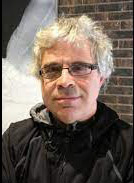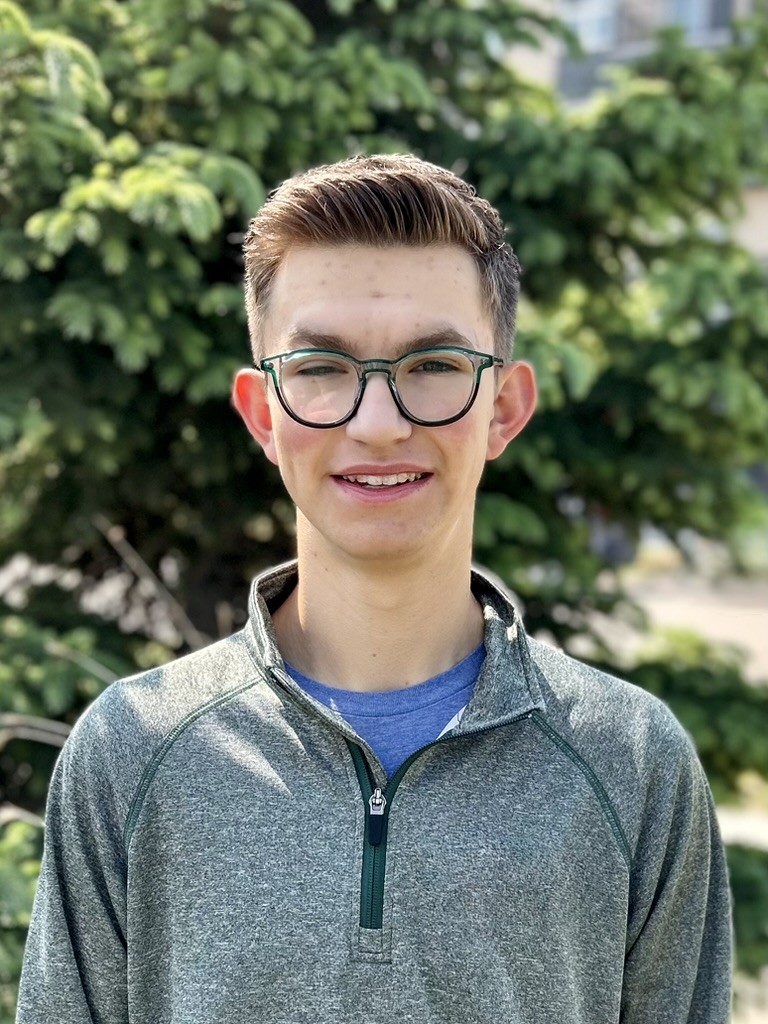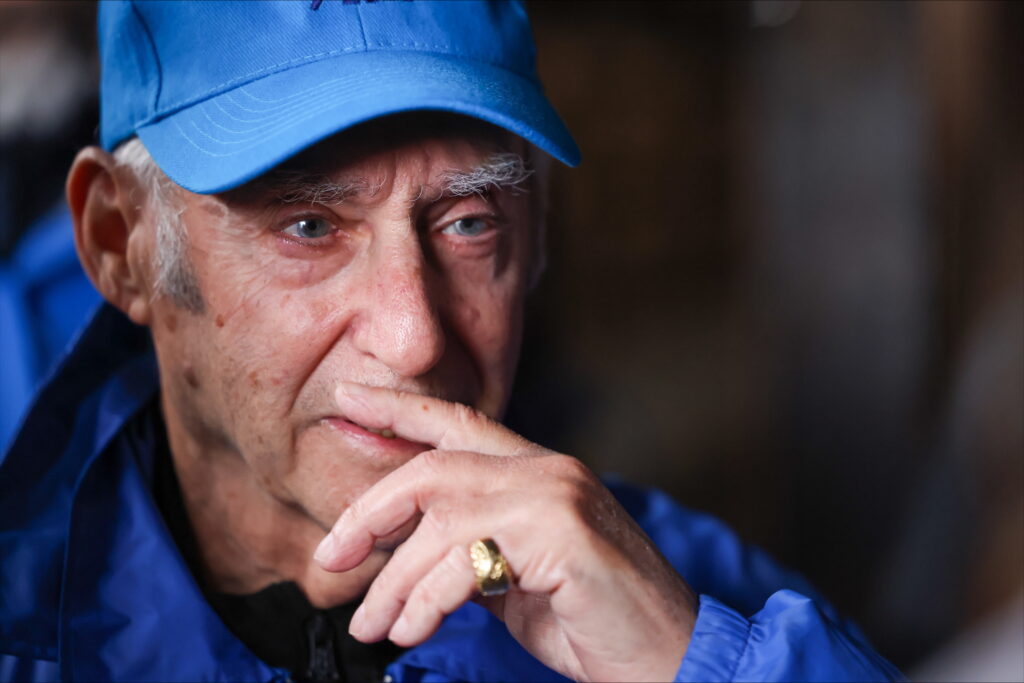Local News
Prolific author Bryan Schwartz has put out five new works within past year

By MYRON LOVE Professor Bryan Schwartz is the very model of a modern-day Jewish Renaissance scholar. The popular legal educator, passionate Zionist, and student of the Holocaust as an in-demand commentator on modern legal and constitutional issues has written or contributed to 34 books and over 300 publications in all – in a legal and teaching career that stretches back more than 40 years. His works encompass legal and governmental issues as well as commentary on the entire gamut of Jewish life – from ancient times to the Holocaust to the current Jewish situation.
In addition to his work as an author, lawyer and academic (as a professor in the University of Manitoba’s Faculty of Law), Schwartz is also a poet, playwright, and songwriter. And his literary output over just the past year reflects the full gamut of his interests and talents.
Since January 2023, Schwartz has produced five quite different works. His most recent work is “It’s About Time:104 Dimensions of Time During Passover” – which readers can download for free on his website –sacredgoof.ca – is a comprehensive overview of the Pesach holiday from a novel perspective.
In a series of what used to be called “quick snappers”, Schwartz points out, for example, that Pesach actually combines two ancient Jewish spring festivals – the sacrifice of the first-born lamb and the first fruits of the harvest of the grain that was planted in the late fall or winter.
He groups his explanations and commentaries into 21 categories related to time. The first group – Cyclical Time – discusses Pesach’s connection to Purim preceding it and Shavuot seven weeks later. He further explains Pesach in Israel and why, in Israel, only one seder is designated as compared to two in the diaspora, how the date for the first seder is officially determined, and what the rules are when the seders overlap with Shabbat.
Other groups include an overview of Pesach’s place in different histories, Pesach within the family context, ritual, the Exodus in world history, Pesach and historical memory, the history of the Haggadah, the bringing together of past, present and future – and many more interesting explanations and fact.
The inspiration for “About Time: 104 Dimensions of Time During Passover”, Schwartz explains in his introduction on his website, came last year at Passover. “I noticed that the text of the Haggadah contains some explicit references to time,” he noted on his website.
“We begin by thanking the Creator for separating the ordinary days from holy days,” he pointed out. “We are enjoined to tell the Passover story “as if” we were personally redeemed from that captivity. We experience, in the now, the coming together of families and communities…as the Israelites did on the night of Passover. We are invited at the end to proclaim, “next year in Jerusalem” – and with the cup of Elijah, think of a Messianic age beyond the present.”
At first, he wrote, he was aiming to write a single blog piece for The Times of Israel, an Israeli-based online newspaper to which Schwartz has become a regular contributor. “Yet the more I looked, the more I found,” he noted.
‘The Jewish tradition is largely about taking a concrete starting point – like an episode related in the Haggadah or the egg on the Seder plate – and finding more and more ways to think about it. The saying is that the Torah has seventy faces. I did not expect to ever get to seventy dimensions of time in Passover, but here I am so far, with one hundred and four…so far.”
While this year, Pesach has now passed. I would encourage interested readers to peruse “About Time: 104 Dimensions of Time During Passover” and print out sections that you might consider introducing into your seders next year.
“My aspiration,” Schwartz writes on his webpage, “would be for the book, in some form or other, to become a familiar companion to the Haggadah as we re-experience Passover every year, For some readers, it might help to make everything old seem new again.”
Schwartz published two other books of note last year. In January, he spoke about the themes in “Re-Enlightening Canada: A Legislative Program for promoting Open, Democratic and Rational policymaking” (available on Amazon) in a question and answer session at the Berney Theatre, with Ruth Ashrafi, Bnai Brith Canada Regional Director for Manitoba, in which he discussed the ills plaguing today’s universities and recommended some solutions.
“When I began my teaching career (at the University of Manitoba Faculty of Law) over 40 years ago,” universities were places which encouraged freedom of expression, open dialogue and diversity of opinion,” he recalls. “That is no longer the case. DEI (diversity, equity and inclusiveness) as it has been developed over the past few years is antithetical to traditional liberal values and is, in particular, hostile to Jews because Jews, within the DEI context, are considered White and White people are considered bad.
“For Jewish students and faculty members, the University of Manitoba has become a hostile environment.”
Schwartz’s grim conclusion is that “Woke” ideology has entirely conquered most universities and that universities are not capable of reforming themselves. The only way they will be restored to a public space where diverse opinions are welcome and freedom of expression again flourishes, he says, is through strong government actions – a recipe for which he outlines in “Re-enlightening Canada”.
’The program,” he explains, “is intended to appeal to reasonable people across the political spectrum. It is a proposal for how people of good faith in democracies can “reason together.” “It is intended to be a moderate and practical response to the ideological excesses of our time.”
The multifaceted Schwartz’s third project – completed last year, was his contribution to the second edition of “Humanity in Doubt”, the reflections of his late father-in—law Philip Weiss, a Holocaust survivor who built a successful furniture manufacturing business here and became a leader in Holocaust education in the schools.
Weiss died in 2008 at the age of 85.
This new, updated edition includes a eulogy by Schwartz and an afterword written by Frances Winograd, one of Weiss’s daughters: “Furnishing an Identity” – based on her Master’s thesis in Interior Design, which places Weiss’s career in design in the context of the Jewish contribution to modernism.
Schwartz co-edited this second edition with his daughter, Lainie (who work at Yad Vashem), and John Richthammer.
Both “Humanity in Doubt” and “ReEnlightening Canada” are available from Amazon or Schwartz’ website – bryanpschwartz@gmail.com
Readers may also be interested in checking out Schwartz’s latest compilation of 24 songs – entitled “The Sacred Goof”- which you can listen to for free online. Schwartz points out that “The Sacred Goof” is a follow up to “Consoulation: A Musical Meditation,” a Jewish-themed musical that successfully premiered at the Gas Station Theatre several years ago. The author/composer hopes to both bring back Consoulation as well as see a production of “The Sacred Goof” in the next year.
An illustrated booklet (with illustrations by Maren Amini) with all the lyrics – can be purchased online by typing in the album name.
Then there is Schwartz’s “Online Dispute Resolution in the Time of Covid”, which is part of a trilogy that he is overseeing, as Co-Editor in Chief of The Manitoba Law Journal, on how the Canadian legal system adapted during the COVID period, and how many of those innovations will bel enduring
Schwartz is available for group presentations.
Local News
Further to the Simkin Centre’s financial situation

By BERNIE BELLAN A while back I published an article about the deficit situation at the Simkin Centre. (You can read it at “Simkin Centre deficit situation.“) I was prompted to write that particular article after reading a piece written by Free Press Faith writer John Longhurst in the August 5 issue of the Free Press about the dire situation personal care homes in Winnipeg are in when it comes to trying to provide their residents with decent food.
Yet, Longhurst made one very serious mistake in his article when he wrote that the “provincial government, through the Winnipeg Regional Health Authority, has not increased the amount of funding it provides for care-home residents in Manitoba since 2009.”
In fact, the WRHA has given annual increases to personal care homes, but its allocations are not broken down by categories, such as food or salaries. As a spokesperson for the WRHA explained to me in an email: “PCHs receive per diem global operating funding based on the number of licensed beds they operate. This funding model is designed to support the full range of operating costs associated with resident care, including staffing, food services, utilities, building operations, and other day-to-day expenses.”
Now, one can make a perfectly valid argument that the level of funding from the WRHA has not kept up with inflation, especially inflation in food costs, but the Simkin Centre is in an even more precarious position because of the skyrocketing cost of kosher food.
“In recent years,” according to an article on the internet, “the cost of kosher food has increased significantly, often outpacing general food inflation due to unique supply chain pressures and specialized production requirements.”
Yet, when I asked Laurie Cerqueti how much maintaining a kosher facility has cost the Simkin Centre, as I noted in my previous article about the deficit situation at Simkin, she responded: “approximately $300,000 of our deficit was due to food services. I do not have a specific number as far as how much of the deficit is a result of kosher food…So really this is not a kosher food issue as much is it is an inflation and funding issue.”
One reader, however, after having read my article about the deficit situation at Simkin, had this to say: “In John Longhurst’s article on Aug 5, 2025 in the Free Press, Laurie (Cerqueti) was quoted as saying that the annual kosher meal costs at Simkin were $6070 per resident. At Bethania nursing home in 2023, the non-kosher meal costs in 2023 were quoted as $4056 per resident per year. Even allowing for a 15% increase for inflation over 2 years, the non-kosher food costs there would be $4664.40 or 24% lower than Simkin’s annual current kosher food costs. If Simkin served non-kosher food to 150 of its 200 residents and kosher food to half of its Jewish residents who wish to keep kosher, by my calculation it would save approximately $200,000/year. If all of Simkin’s Jewish residents wished to keep kosher, the annual savings would be slightly less at $141,000.”
But – let’s be honest: Even though many Jewish nursing homes in the US have adopted exactly that model of food service – where kosher food is available to those residents who would want it, otherwise the food served would be nonkosher, it appears that keeping Simkin kosher – even though 45% of its residents aren’t even Jewish – is a “sacred cow” (pun intended.)
So, if Simkin must remain kosher – even though maintaining it as a kosher facility is only adding to its accumulated deficit situation – which currently stands at $779,426 as of March 31, 2025,I wondered whether there were some other ways Simkin could address its deficit while still remaining kosher.
In response to my asking her how Simkin proposes to deal with its deficit situation, Laurie Cerqueti wrote: “There are other homes in worse financial position than us. There are 2 homes I am aware of that are in the process of handing over the keys to the WRHA as they are no longer financially sustainable.”
I wondered though, whether the Simkin Centre Foundation, which is managed by the Jewish Foundation of Manitoba might not be able to help the Simkin Centre reduce its deficit. According to the Jewish Foundation’s 2024 annual report, The Saul and Claribel Simkin Centre Foundation, which is managed by the Jewish Foundation, had a total value of $11,017,635.
The Jewish Foundation did distribute $565,078 to the Simkin Centre in 2024, but even so, I wondered whether it might be able to distribute more.
According to John Diamond, CEO of the Jewish Foundation, however, the bylaws of the Foundation dictate that no more than 5% of the value of a particular fund be distributed in any one year. There is one distinguishing characteristic about the Saul and Claribel Simkin Centre Foundation, in that a portion of their fund is “encroachable.” The encroachable capital is not owned by JFM. It is held in trust by JFM but is beneficially owned by Simkin, similar to a “bank deposit”. While held by the JFM, these funds are included in the calculation of Simkin’s annual distribution.
I asked John Diamond whether any consideration had been given to increasing the distribution that the Jewish Foundation could make to the Simkin Centre above the 5% limit that would normally apply to a particular fund under the Foundation’s management.
Here is what John wrote in response: “The Simkin does have an encroachable fund. That means that at their request, they can encroach on the capital of that fund only (with restrictions). This encroachment is not an increased distribution; rather, it represents a return of capital that also negatively affects the endowment’s future distributions.
”It is strongly recommended that encroachable funds not be used for operating expenses. If you encroach and spend the capital, the organization will receive fewer distribution dollars in the next year and every year as the capital base erodes. Therefore, the intent of encroachable funds is for capital projects, not recurring expenses.”
I asked Laurie Cerqueti whether there might be some consideration given to asking for an “encroachment” into the capital within the Saul and Claribel Simkin Centre Foundation?
She responded: “We are not in a position where we are needing to dip into the encroachable part of our endowment fund. Both of our Boards (the Simkin Centre board and the Saul and Claribel Simkin Centre Foundation board) are aware of our financial situation and we are all working together to move forward in a sustainable way.”
At the same time though, I wondered where donations to the Simkin Centre end up? Do they all end up in the Simkin Centre Foundation, for instance, I asked Laurie Cerqueti on December 15.
Her response back then was: “All donations go through our Foundation.”
I was somewhat surprised to read that answer, so I asked a follow-up question for clarification: “Do all donations made to the Simkin Centre end up in the Simkin Centre Foundation at the Jewish Foundation?”
The response this time was: “No they do not.”
So, I asked: “So, how do you decide which donations end up at the Foundation? Is there a formula?”
Laurie’s response was: “We have a mechanism in place for this and it is an internal matter.”
Finally, I asked how then, the Simkin Centre was financing its accumulated deficit? Was it through a “line of credit with a bank?” I wondered.
To date, I have yet to receive a response to that question. I admit that I am puzzled that a personal care home which has a sizeable foundation supporting it would not want to dip into the capital of that foundation when it is facing a financial predicament. Yes, I can see wanting the value of the foundation to grow – but that’s for the future. I don’t know whether I’d call a $779,425 deficit a crisis; that’s for others to determine, but it seems pretty serious to me.
One area that I didn’t even touch upon in this article, though – and it’s something I’ve written about time and time again, is the quality of the food at the Simkin Centre.
To end this, I’ll refer to a quote Laurie Cerqueti gave to John Longhurst when he wrote his article about the problems personal care homes in Winnipeg are facing: “When it comes to her food budget, ‘we can’t keep making the same number of bricks with less straw.’ “
Local News
Exclusive: Security Enhancement Fund to be announced by Province in coming days

By NOAH STRAUSS The province is set to announce a new program called the Security Enhancement Fund, which
will provide funding to religious and faith groups to improve security at institutions such as
synagogues and mosques. In an exclusive interview, Minister of Justice Matt Wiebe outlined the
plan and detailed what the province has already done to help protect Jewish Manitobans.
“What we want to do is to be able to provide the community with the kind of tools that they need
to stay safe and to ensure that everyone in the community feels safe,” said Wiebe.
The fund will provide a missing link between government and religious communities, and
communities will now be able to make their own choices without money being a big restraint.
Essentially, the power will be in the hands of community leaders and not government officials.
The minister noted that the new partnerships will provide the province a better understanding of
the needs of every community. Rather than the province making the choices, they are
essentially giving a voice to each community. The grants, totalling $1 million, will provide funds to enhance security at facilities like synagogues.
The Jewish Post reached out to Dr. Rena Secter Elbaze, executive director of Congregation
Shaarey Zedek. “It’s important that the government show us that they’re taking security seriously and stepping up to the plate to make this offer. We will absolutely be applying for grant money,” she said. Elbaze also wants to know whether or not the government will cover the costs of things the synagogue has already spent money on. She noted that the province has, in the past, made grants available to have security guards present.
When speaking about what the Justice Ministry has already done to protect Jewish Manitobans,
Wiebe brought up the new special prosecutor that is focusing on hate crimes. Wiebe said the
special prosecutor works closely with the Winnipeg Police Service “to support investigations and
prosecute hate crimes. Wiebe also went on to say how the Department of Education has been helping to fight antisemitism. “The creation of the Holocaust education curriculum is an important step in the right direction,” he said. When asked about Oliver Didtger Ederhof, the individual charged with 14 counts of mischief including vandalism of Shaarey Zedek, Wiebe said decisions like bail and police undertakings are decisions that are in part made by the federal government through the criminal code and policies. “We’re going to continue to advocate for stricter bail reform at the federal level…. I’ve been very clear, we issued clarified directives around bail to our Crown prosecutors.”
The full announcement from the province is expected in the coming days.
Local News
March of the Living 2023 participants form Taste of Hope project to help honour the memory of Holocaust survivor Alex Buckman

By BERNIE BELLAN The March of the Living is an annual two-week international educational program that brings thousands of students and adults to Poland and Israel to study the Holocaust, Jewish history, and the rise of the State of Israel. Founded in 1988, it features a 3-kilometer silent walk from Auschwitz to Birkenau on Yom HaShoah (Holocaust Remembrance Day).
Attendees on the march are accompanied by adults, some of whom themselves have been Holocaust survivors.
Following the week in Poland, participants travel to Israel to observe Yom HaZikaron (Israel’s Memorial Day) and celebrate Yom HaAtzmaut (Israel’s Independence Day), marking a journey from darkness to life.
For many years the coordinator of the march in Winnipeg was Roberta Malam, working on behalf of the Jewish Federation of Winnipeg. More recently Abby Flackman filled that role, and now the person in charge is Lindsey Kerr.
Since its inception 37 years ago the March of the Living has become a rite of passage for many young Winnipeg Jews who have been able to participate as an organized group from Winnipeg and combine visits to the death camp at Auschwitz-Birkenau in Poland with the subsequent trip to Israel.
Then – the Covid pandemic hit – in 2020, and the March of the Living was put on hold for two years – in 2020 and 2021.
In 2022, the March of the Living resumed, but there was no organized contingent from Winnipeg participating. (There may have been some Winnipeggers who did go on the march that year, but if there were any they would have been part of a general Canadian group since there was no Winnipeg coordinator that year.)
In 2023, however, once again a very large contingent of young Canadian Jews – 51 altogether, of whom approximately two-thirds were from Winnipeg, went on that year’s March of the Living. That particular march was memorable for many reasons, including the fact it was the last full march since 2019 and was to remain the last march to have an organized Winnipeg contingent in the past six years as the years 2024 and 2025 were interrupted by the war in Gaza. (There were smaller marches held in 2024 and 2025, but again there was no organized contingent from Winnipeg.)
Recently, we were contacted by one of the participants of that 2023 march, Ethan Levene, who asked us whether we’d be interested in running what turned out be a very poignant story about one particular aspect of that 2023 March of the Living.
Here is what Ethan wrote:
“In April 2023, the Coast to Coast Canadian delegation of March of the Living was privileged to travel with Holocaust survivor Alex Buckman (z”l). March of the Living is a Holocaust education trip that allows participants to visit and bear witness to the sites of the Holocaust. Unfortunately, while sharing his story in Poland, Alex passed away. However, the impact he left on us students was immeasurable.

“While speaking to us in Warsaw, Alex told us the story of his Aunt Becky’s gâteau à l’orange (orange cake). While in Ravensbruck concentration camp, his aunt managed to write down this recipe. After his parents’ murder, his Aunt Becky went on to raise Alex after surviving. In addition to sharing his story, Alex tasked us with baking the cake with family and friends.
“Out of this, a group of alumni from our trip have created this project: ‘A Taste of Hope.’ On February 1st, university students from over 5 universities across Canada will come together to bake the gâteau à l’orange and hear Alex’s story. Proceeds from the event and this fundraising page will support the World Federation of Jewish Holocaust Survivors and Descendants. Alex was heavily involved with this organization, whose mission is to both create community for Holocaust survivors and their descendants and educate about the Holocaust to help fight against antisemitism and all forms of bigotry and hate.
“Here is information from our fundraising page for the event – ‘A Taste of Hope’: Fundraising for A Taste of Hope.
Ethan added that “it’s completely student led, all by alumni from our 2023 trip attending university at these various locations across Canada; Winnipeg, London, Kingston, Montreal.”
He also added: “Follow us on instagram@tastehope.“
Here is a link to a CBC story about Alex Buckman: Alex Buckman story
In a subsequent email Ethan gave the names of Winnipeggers who are involved in A Taste of Hope: Ethan Levene (studies at McGill), Zahra Slutchuk, Alex Stoller (studies at Queens), Coby Samphir, Izzy Silver (studies at Waterloo).
He also added names of others who are involved in the project: Jessie Ages, Anneke Goodwin, Lilah Silver, Ella Pertman, Ellie Vogel, and Talia Cherun.
To find out more about March of the Living in Winnipeg go to: March of the Living


